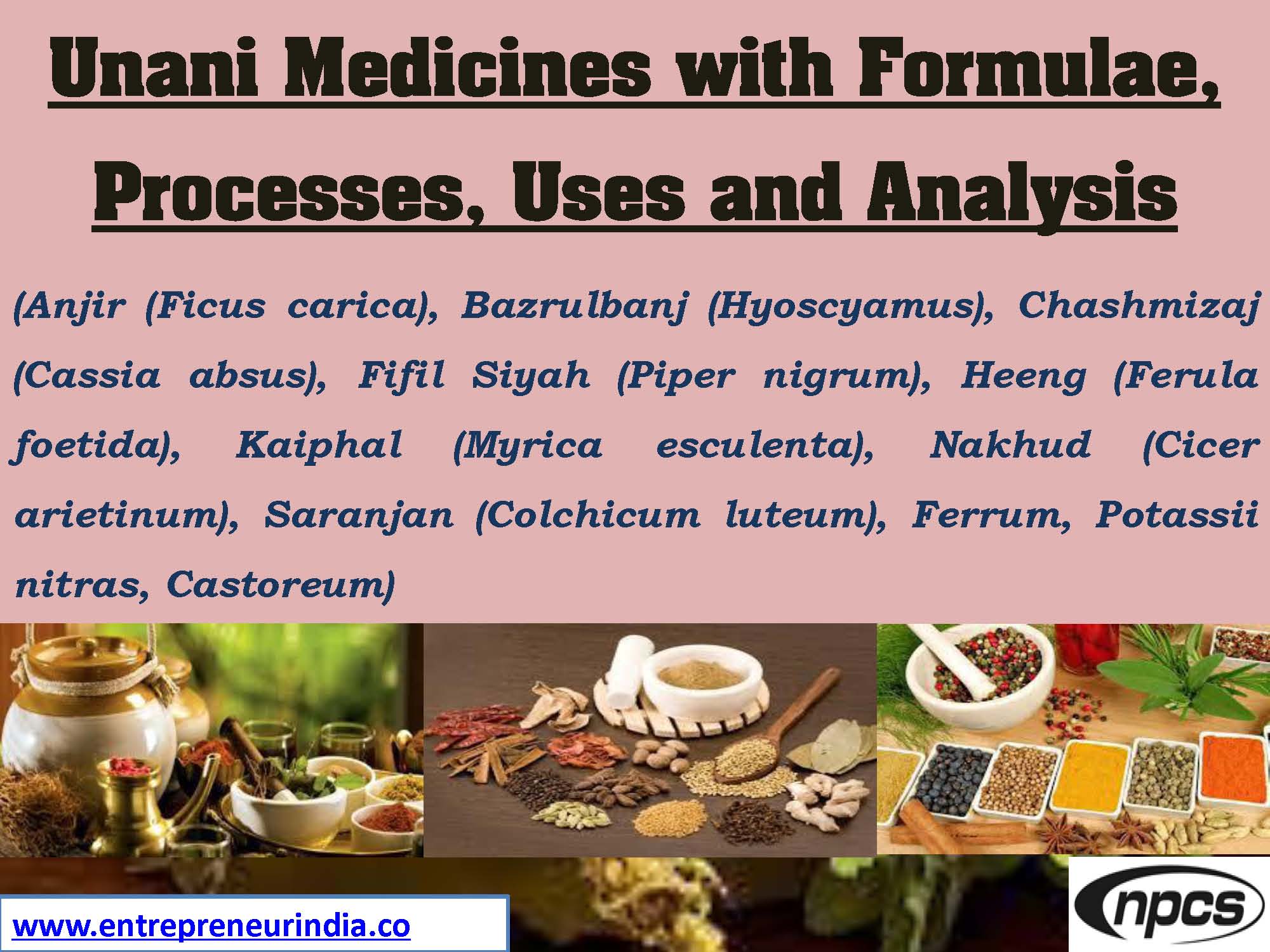
Unani medicine, rooted in Greco-Arabic healing traditions, is a holistic system that has stood the test of time through its emphasis on balance, natural remedies, and detailed therapeutic methods. The keyword unani-medicines-with-formulae-processes-uses-and-analysis-anjir-ficus-carica-bazrulbanj-hyoscyamus-chashmizaj-cassia-absus-fifil-siyah-piper-nigrum-heeng-ferula-foetida-kaiphal-myri refers to a rich blend of herbal ingredients and ancient formulations used for centuries. These natural components—like anjir (Ficus carica), bazrulbanj (Hyoscyamus), and heeng (Ferula foetida)—are processed using time-honored techniques for maximum efficacy. Moreover, Unani medicines offer a balance between therapeutic function and minimal side effects, making them increasingly relevant today. Their unique combinations and processes continue to inspire scientific analysis and integrative healthcare practices worldwide.
Key Ingredients and Practices in Unani Medicines
Unani medicine revolves around the concept of balancing the four humors in the body—blood, phlegm, yellow bile, and black bile. Remedies are formulated using precise proportions, derived from plants, minerals, and animal products. In this section, we examine key medicinal ingredients, the formulas they’re used in, their preparation techniques, and therapeutic roles. Unani-medicines-with-formulae-processes-uses-and-analysis-anjir-ficus-carica-bazrulbanj-hyoscyamus-chashmizaj-cassia-absus-fifil-siyah-piper-nigrum-heeng-ferula-foetida-kaiphal-myri form a powerful repertoire of natural solutions for modern and traditional health conditions alike.
Read More :Business to Start in Goa
Anjir (Ficus carica): The Gentle Laxative
Anjir, commonly known as fig, is rich in fiber, enzymes, and natural sugars. In Unani practice, it is prescribed as a mild laxative and respiratory soother, particularly for conditions involving the lungs and intestines. The dried fruit is often decocted or soaked overnight and used alone or with honey. Moreover, its mucilaginous texture helps soothe mucous membranes. Formulations using anjir often include ingredients like safarjal (quince) or asgand (Withania somnifera) for added effect. As a result, it plays a crucial role in digestive tonics and cough syrups in Unani pharmacopeia.
Bazrulbanj (Hyoscyamus niger): Sedative and Antispasmodic
Bazrulbanj, derived from Hyoscyamus niger, contains powerful alkaloids like hyoscyamine and scopolamine. Traditionally used to treat insomnia, cough, and neural disorders, it must be handled with care due to its potency. The seeds are carefully dried, powdered, and combined with soothing agents such as khas (vetiver) and gul-e-surkh (rose). In Unani medicine, it’s used in small, controlled doses for its sedative and antispasmodic properties. Despite its toxicity in excess, proper preparation and dosage allow it to be highly effective for neurological and respiratory ailments.
Chashmizaj (Cassia absus): Eye and Skin Remedy
Chashmizaj, known botanically as Cassia absus, is mainly used in treating eye infections and skin conditions. The seeds are cleaned, dried, and crushed into a fine powder or infused into water. This infusion is then used as a topical application for conjunctivitis or applied to boils and skin irritations. It is also used internally for detoxifying blood and easing digestive discomforts. Moreover, it serves as a base in formulations that address chronic skin conditions like eczema and psoriasis when combined with neem or babchi seeds.
Fifil Siyah (Piper nigrum): Digestive and Stimulant
Fifil siyah, or black pepper (Piper nigrum), is a cornerstone spice in both Unani and Ayurvedic systems. Known for its digestive stimulant properties, it enhances the bioavailability of other herbs. In Unani tonics, it is often used in powder form along with zanjabeel (ginger) and zeera (cumin) to treat indigestion, flatulence, and sluggish metabolism. The warming nature of fifil siyah makes it ideal for cold-dominant conditions and is frequently included in revitalizing tonics and warming oils. Furthermore, it helps in decongestion and respiratory stimulation.
Heeng (Ferula foetida): Carminative and Antiflatulent
Heeng, derived from Ferula foetida, is renowned for its carminative and antiflatulent properties. Despite its pungent odor, it plays a vital role in formulations for colic, bloating, and gas. In Unani preparations, heeng is usually fried in ghee or roasted to reduce its harshness and then blended with other herbs such as ajwain (carom seeds) and sumbulutteeb (Nardostachys jatamansi). It also has antimicrobial properties, making it useful for intestinal infections and mild food poisoning. Its precise application is key to maintaining effectiveness without overpowering the remedy.
Kaiphal (Myrica nagi): Respiratory and Antioxidant Herb
Kaiphal, from the Myrica nagi plant, is used in treating asthma, bronchitis, and coughs. The bark and fruit contain tannins, flavonoids, and essential oils that help clear mucus and strengthen lung function. Ground into powder and combined with honey or milk, it serves as a reliable respiratory tonic. Additionally, kaiphal’s antioxidant effects aid in strengthening the immune system and cleansing the blood. Its presence in unani-medicines-with-formulae-processes-uses-and-analysis-anjir-ficus-carica-bazrulbanj-hyoscyamus-chashmizaj-cassia-absus-fifil-siyah-piper-nigrum-heeng-ferula-foetida-kaiphal-myri highlights its role in balancing the body’s internal environment and enhancing vitality.
Formulation Techniques and Safety
Unani medicines are crafted using meticulous processes such as distillation (taraqeeq), calcination (taqreer), infusion (naqaa), and decoction (joshandah). These techniques preserve the active principles of herbs while making them more bioavailable. Safety is ensured through detoxification steps like soaking, roasting, or fermenting certain herbs. For example, toxic plants like Hyoscyamus or Aconitum are first purified (tasfiya) to neutralize harmful compounds. Moreover, compound formulations are often balanced using opposing temperaments (mizaj), ensuring that a hot herb is tempered with a cooling agent to maintain humoral balance.
Modern Research and Analytical Advances
Contemporary science is increasingly validating Unani remedies. Analytical tools like HPLC, mass spectrometry, and spectroscopy are being employed to study active compounds in Unani herbs. These methods help verify purity, dosage precision, and pharmacological actions. Research on Ficus carica confirms its antioxidant and anti-inflammatory potential, while Piper nigrum shows significant enzyme-stimulating effects. Moreover, safety profiles are being established for ingredients like heeng and Hyoscyamus to support clinical usage. This synergy between traditional wisdom and modern science strengthens the credibility and global appeal of Unani medicine.
See Also : Business to Start in Gujarat
Conclusion
The ancient yet ever-relevant world of unani-medicines-with-formulae-processes-uses-and-analysis-anjir-ficus-carica-bazrulbanj-hyoscyamus-chashmizaj-cassia-absus-fifil-siyah-piper-nigrum-heeng-ferula-foetida-kaiphal-myri reflects the harmony of nature, science, and healing. Each herb—be it anjir for digestion or Hyoscyamus for neurological balance—holds centuries of empirical knowledge. Moreover, the preparation techniques, therapeutic combinations, and modern analytical validations elevate the Unani system as a reliable and integrative branch of healthcare. As global interest grows in herbal and traditional systems, Unani medicine stands tall, offering time-tested remedies that are both gentle and effective for chronic and acute conditions alike.





